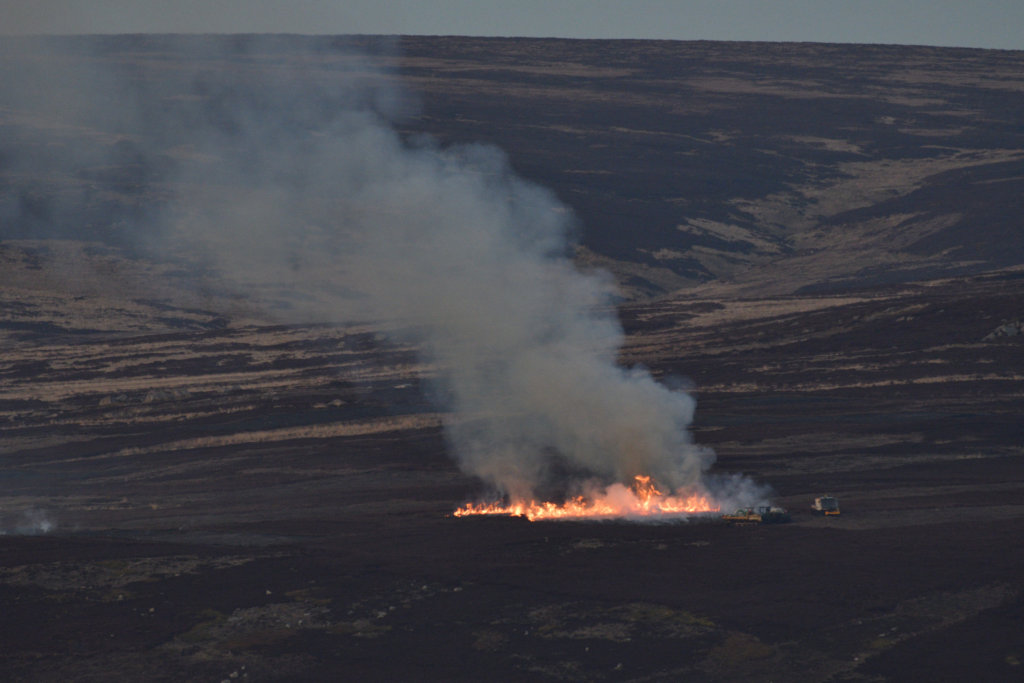
I’m a Radio 4 addict but I missed PM yesterday as I was engaged with lawyers then, and for a lot of the day.
But I caught up with this piece on climate change (starts 45 minutes into programme) and the mention of the government inactivity on banning burning on peatlands being possibly due to lobbying from those great environmentalists the moorland managers (at 50 minutes very near the end). Yes, Johnson needs to make a decision on peat.
More and more people now know that driven grouse shooting is an environmental disaster and more and more know that the government is on this subject (as in other areas) hopelessly slow at dealing with a crisis. And to think that the Conservative Party used to have a reputation for competence…
[registration_form]
I was listening to that, just as it was getting interesting, Evan Davies cut the discussion and introduced some insignificant item which I can’t remember. This household expressed some annoyance!
If one goes back some way, history shows that Tory Governments has repeatedly failed to grasp and take action in an important situation, in the 1930s Winston Churchill was constantly warning the Baldwin Tory Government of the lack of preparation by Britain for war with Germany. Churchill’s well used phrase to Baldwin was “TOO LATE”. John Kennedy also wrote a book entitled “ Why England Slept “.
So the idea that the Tories are efficient is a complete fallacy Yet again they are showing their complete incompetence, this time regarding the banning of driven grouse hooting and it’s wildlife horrors and environmental destruction.
I’m off grouse hooting tomorrow, if it stays fit.
If you do not burn, you risk wild fires which are a complete disaster when a fire gets into the peat it will burn till you get substantial rain. I’ve see it 18 inches of pure ash. Awfull environmental disaster. The trouble is people with a little knowledge and no sense. Controlled burning lessens the risk of wild fires and gives cover for wildlife.
Yes Ian, but if the impoverished heather clad moorland is rewilded and allowed to be wet again then the fire is not going to burn very far or very long.
The whole problem has been created by the draining and burning of the environment in the first place. Turning it from a natural boggy place to a drained, burned heather tinder box!
Have you ever been on grouse moor ?
I can tell you its the boggiest environment you will find. The amount of water a moor holds is staggering. I speak from experience having disappeared up to my elbows a few times.
I think you will also find that trees and scrub provide excellent cover for wildlife. Along with ponds and large boggy areas.
Quite the opposite Ian. Present management of the moors eg: draining the moors and controlled burning to increase heather, also increases risk of wildfires. Burning is done to promote a monoculture of heather: heather has a higher tinder value than the grasses and bilberry etc which would grow on damper, less drained unburnt moors. Burning also damages and dries out the surface peat and mosses which hold moisture, preventing surface burning.
So dry, drained, burnt, moss free, heather moorland is far more prone to wildfires than damp diverse unburnt moors.
The problem is people with a little knowledge and no sense.
Also the argument to destroy everything on the moors by burning to prevent accidental fires, sounds as balmy to me as our local keeper who says “me and the other local keepers try to kill as many hares each year as possible, just so the lurcher men don’t come and try to get them”.
Well the science your ignoring about cool burning which has little to no effect on the peat as it is not the peat that is being burnt but the heather and rank grass giving new growth of heather the rotational burn is essential in having a variety of habitats for differing species many of them red and amber listed species, the sphagnum moss is improved with the potash that is released. a rotational cool burn and judiciously placed fire breaks gives us a chance to control wildfires that have devastated moors all over the moors in the UK taking up to a decade to recover, some parts are burnt beyond natural recovery and draining the peat levels making a bigger risk of wildfire. I can’t see what your aim is beyond stopping driven grouse shooting that provides ideal habitats for some of our iconic species that you seem only to willing to sacrifice for your own agenda. Your agenda will have a devastating effect on the ecology of the moors, risking the extinction of many of our red and amber listed species, this is mass vandalism of our uplands, have you no conscience as to what you will do if you succeed. how will you feel when you are referred to as the vandals of the uplands, a career trashed with nobody to blame but yourselves.
They stopped controlled burning in Australia, the rest is history
Richard -thank you for your first comment here even though it is a rural myth.